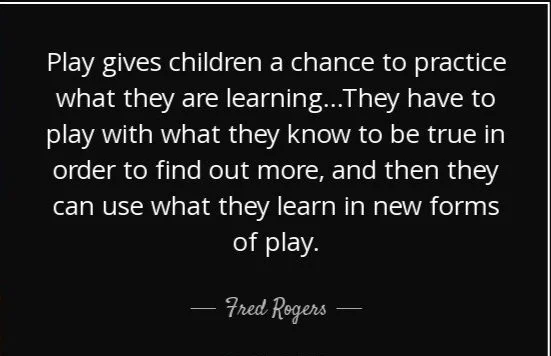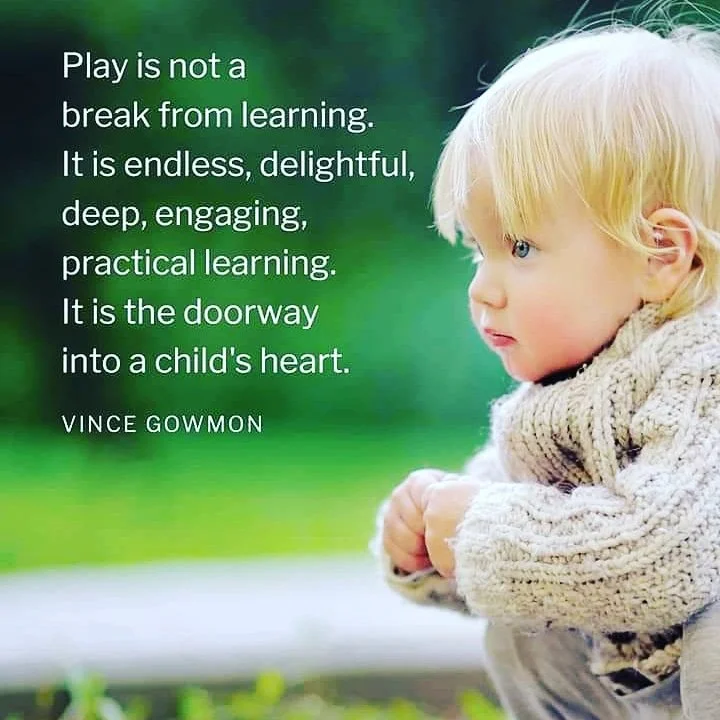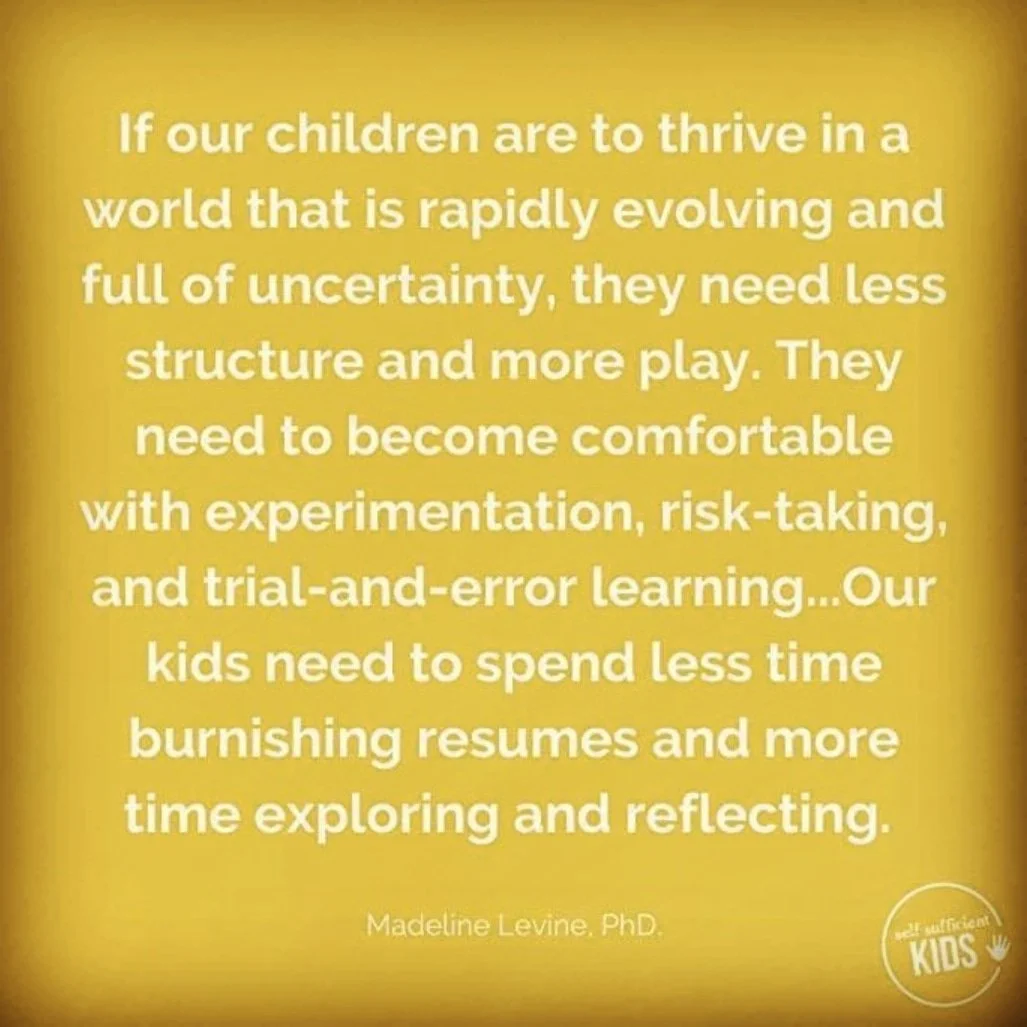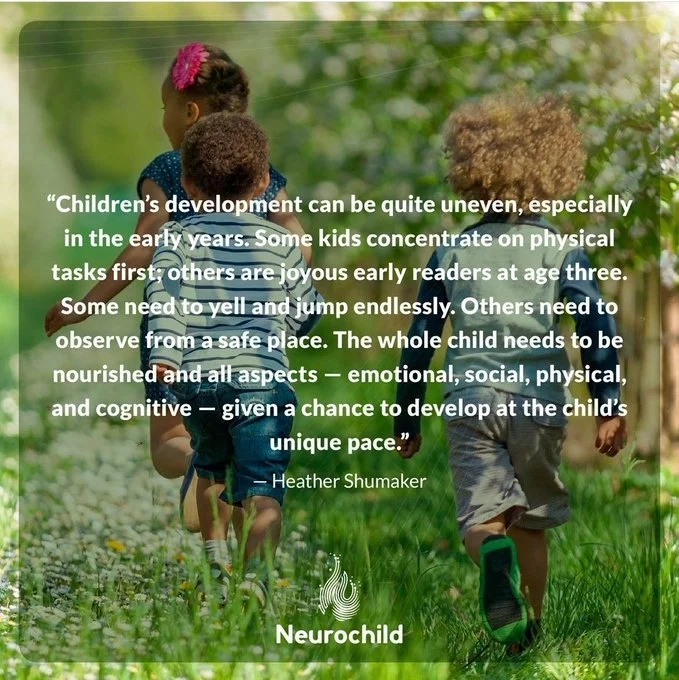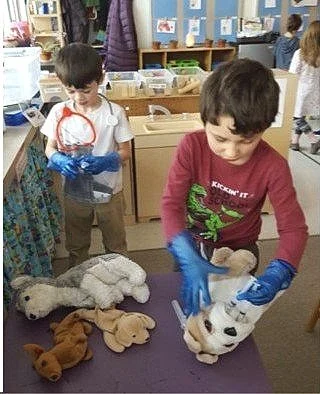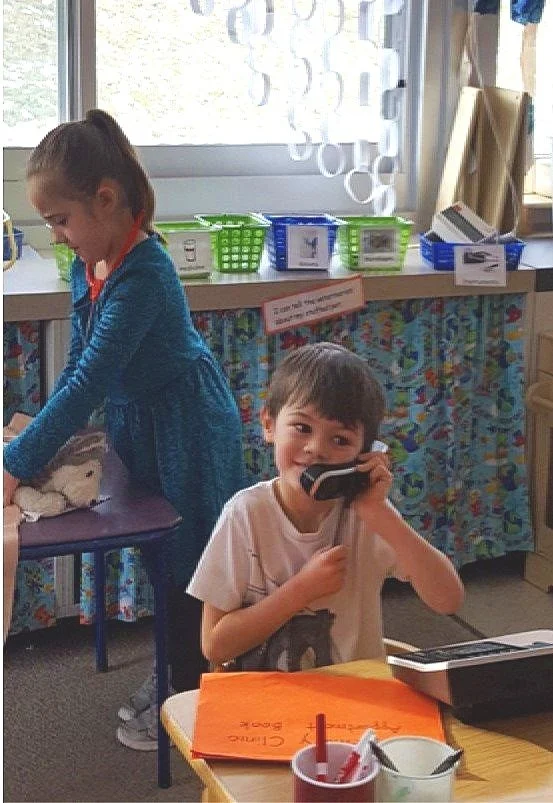p l a y & i n q u i r y
Play is the work of childhood (as Fred Rogers always reminded us). So, why is it not more of a priority during the school day? Why are we not giving our children more time to practice what they are learning through play and inquiry?
I have the gift of knowing Renée Dinnerstein, a leader in early childhood education and inquiry-based, guided play. Her book, Choice Time: How to Deepen Learning Through Inquiry and Play, PreK–2, was published by Heinemann in August 2016, yet I have read and followed Renée’s blog, “Investigating Choice Time: Inquiry, Exploration, and Play,” for years. She has an endless passion for children exploring and learning about the world around them through choice time. Renée’s charge has fueled me to reach out to school districts I support, advocating for more time within the school day to be carved and prioritized where children can experience this kind of learning. Play is learning. Children’s choices are their voices.
My goal is to validate and be a voice for like-minded educators and families who want their children to have more time during the school day for inquiry and imaginative play. There are copious amounts of research to support the importance of brain development through play-based learning. We need to take the mission of ensuring there is time for play to the next level, though. I propose our children’s school days begin with inquiry and play in the classroom — setting the tone for the day.
Imagine our youngest learners’ days beginning with time to “develop self-regulation; language; cognition; social competence; opportunities to explore the world safely; emotional control; symbolic and problem-solving abilities; emerging skills . . . play is the engine that drives their learning” (NAEYC2009). When I taught kindergarten, I would always hold an hour for imaginative play at the end of each day. Now, in retrospect, I hear Renée’s voice. She shared with me that she always began her days with choice time and play for many reasons but especially because she never wanted to hold that time over a child as a possibility to lose depending on their choices as the day evolved. How beautiful would it have been for my kindergartners (who were also all bilingual) to begin each day developing their voices and using this time as a springboard for writing ideas later in the day?
As a mom, I lived the nightmare of my older son having an incredibly rich play-based prekindergarten experience, only to go on to kindergarten being expected to sit still and comply with filling in worksheets at a desk or sitting for extensive periods. An article, written by Bill Murphy Jr. in early 2017 explains why this is so problematic.
“Now researchers say that this mistake leads up into a three-pronged, perfect-storm of problems:
We overprotect kids, trying to keep them safe from all physical dangers — which ultimately increases their likelihood of real health issues.
We inhibit children’s academic growth (especially among boys), because the lack of physical activity makes it harder for them to concentrate.
When they fail to conform quietly to this low-energy paradigm, we over-diagnose or even punish kids for reacting the way they’re naturally built to react.”
We must have a mindset shift in this country. A shift from seeing schools as buildings that children attend to understand reading, writing, math, and social sciences to schools as part of our communities where children develop understandings of the world around them and social-emotional skills that will help them thrive and communicate their ideas with others. I truly believe if there is not ample time allotted for our children to begin every day exploring, playing, and building social awareness, we are failing them.
I ask — is our goal as educators to develop and nurture our youth to become curious, empathetic, imaginative, flexible, resilient people or products of a program-based, test-driven society, where individuality and questioning are sometimes labeled as “behavior problems”? Deborah Meier’s words could not ring truer for me: “You cannot prepare kids for democracy unless they experience living in a democracy.” If we know a concentrated amount of uninterrupted time for exploratory play is crucial to young learners’ development and understanding of democracy in action, how can we ensure it occurs daily? A group of phenomenal educators speak to the value of play-based learning in a video clip entitled “Creating Citizens for the World — Early Educators Speak Out.”
In December 2017, Susan Ochshorn, joined the Network for Public Education (NPE) Board of Directors. Susan’s bio describes her as “a writer, policy analyst, and one of the nation’s leading activists for the whole child.” In her article “A Battle for the Heart and Soul of Public Education,” she recounts that over time, “Drills, scripted teaching and standardized testing threatened our national genius for inventiveness. We had entered risky terrain, five-year-olds deemed failures before they reached kindergarten. We knew that flexibility, perseverance, empathy, curiosity, social awareness, and resilience are best developed in exploratory play, yet these qualities were now missing from the lives of growing numbers of our youngest citizens.”
We need to do better for our youth. To read more about how you may begin your school days with play and inquiry as well as sample schedules, check out my article, “Why Every Kindergarten and First-Grade School Day Should Begin with Inquiry and Imaginative Play: Setting the Tone for the Day.”

